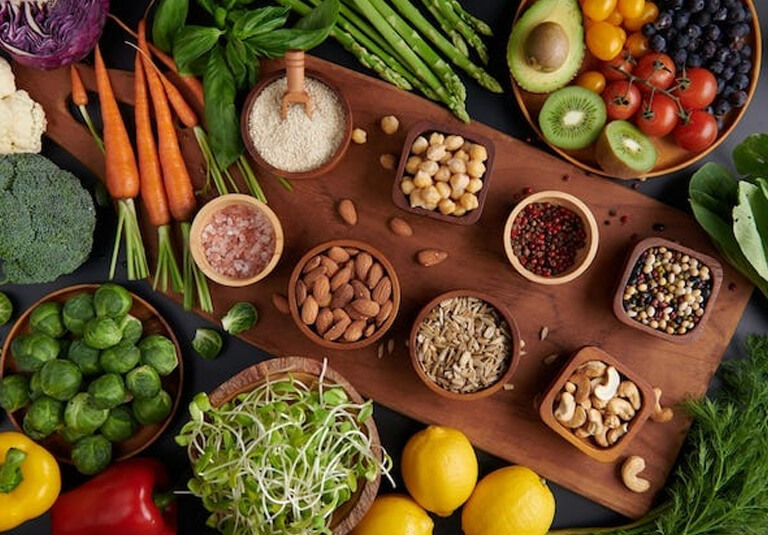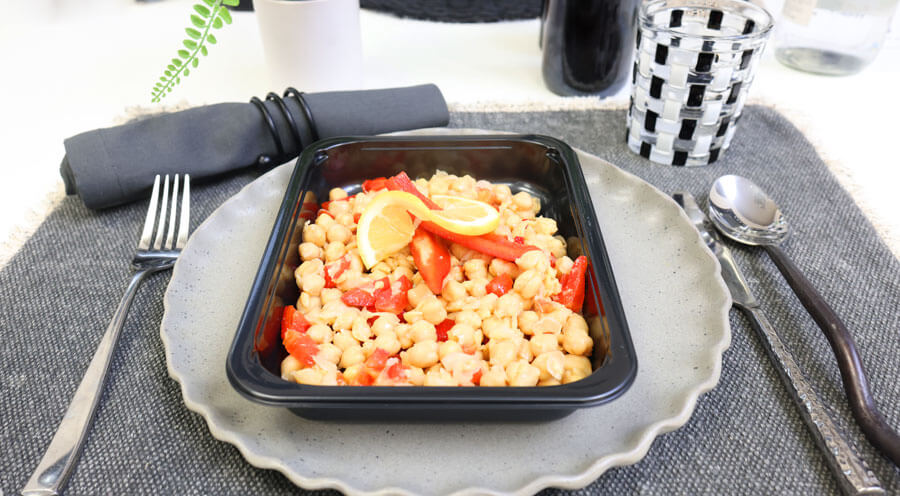Eat These Foods to Get a Major Fiber Boost

Fiber Boosting Foods
Fiber Foods Table of Contents
Looking to improve your health? Here are the top fiber-rich foods that are fundamental to a balanced diet. Despite being one of the cornerstones of a well-balanced diet, fiber is often overlooked. Many people fall short of getting the right amount of fiber in their daily diets, often because they aren’t eating enough fruits, vegetables, and whole grains. For those of us guilty of skimping, we’re doing ourselves a great disservice. Fiber aids in everything from weight loss to controlling blood sugar, has certain preventative properties and more. Let’s delve deeper and see how eating more fiber can improve our lives.
What is Fiber?
Fiber is a type of indigestible carbohydrate that is found in a plant’s skin, seeds, or flesh. Unlike other types of carbohydrates which are broken down into sugar and absorbed in the body, fiber stays in tact while makes its way through our digestive systems. There are two types of fiber, soluble and insoluble. Many of the foods that are rich in fiber contain both and it is best to eat a variety. We need both kinds of fiber in our diets as they each have different benefits and perform different roles in our bodies. When soluble fiber comes into contact with water, it turns into a viscous gel-like substance which helps slow digestion. Soluble fiber is also a source of food for the healthy bacteria that live in our digestive tracts. Good sources of soluble fiber include:

Beans are rich in fiber
Beans
Sweet Potatoes
Avocados
Oats
Bananas
In contrast, insoluble fiber doesn’t dissolve in water and instead of being metabolized by bacteria, it helps add bulk to stool. Insoluble fiber is particularly good for those who experience bowel trouble and constipation as it helps keep movements regular. Good sources of insoluble fiber include:

Farro is rich fiber
Whole grains like farro
Broccoli
Raspberries
Green peas
In whole grains, most of the fiber is found in the edible outer layer called the bran. Refined grains, such as white rice, have their bran removed. In turn, refined grains are stripped off of most of their fiber.
Fiber-Rich Foods to Add to Your Diet
Fiber is found in all manner of plants. This gives you a bit of an edge if you’re on a plant-based diet. There’s a good chance you’re already tucking into these fiber-rich foods. If you do find your diet lacking in fiber, look to fruits, vegetables, whole grains, and legumes to get your fix. Here are additional fiber-rich foods you can eat:
Blackberries (8 grams of fiber per cup)
Artichoke (7 grams of fiber in one medium-sized artichoke)
Pumpkin seeds (5 grams of fiber per one ounce serving)
Sweet potatoes (4 grams of fiber per cup)
Cauliflower (2 grams of fiber per cup) including cauliflower rice
Oats (4 grams of fiber per one cup of cooked oatmeal)
Almonds (3.5 grams of fiber per ounce)
Chia seeds (11 grams of fiber per ounce)
Barley (6 grams of fiber per cup of cooked barley)
Banana (3 grams of fiber in one medium-sized banana)
Soybeans (17 grams of fiber per cup)
Flax seeds (2.8 grams of fiber per tablespoon)
Squash (about 10 grams of fiber per medium-sized squash, depending on variety). Good dishes include spaghetti squash and squash fries
Popcorn (3.6 grams of fiber per one ounce serving)
Pistachios (3 grams of fiber per one ounce serving)
Sunflower seeds (3 grams of fiber per ounce)
Broccoli (2.4 grams of fiber per cup)
Kale (2.6 grams of fiber per cup)
Spinach (2.4 grams of fiber per cup)
The wide range of foods containing fiber means you can boost your fiber intake across the day. For breakfast have a bowl of oatmeal sprinkled with chia seeds and fresh berries. At snack time eat an apple, have some avocado toast on whole grain bread or eat some seeds. You get the idea. With so many combinations on the table, your taste buds will never grow bored.
Getting More Fiber in Your Diet Can Help You
There’s no doubt about it. Fiber, in all of its forms, works hard for you. Many benefits come with introducing more fiber into your diet. These are just a few of the major positive effects eating more fiber will have on your body.
Fiber keeps you full longer. Having a serving of fiber at mealtime keeps you feeling full for a longer period of time. This can reduce unnecessary snacking between mealtimes, prevent overeating, and help you stick to smaller portions if you’re trying to lose weight.
Fiber controls your blood sugar levels. But the benefits of fiber don’t just stop there. Fiber plays a role in controlling blood sugar levels by slowing down how quickly the body absorbs sugar. This is great news for diabetics or pre-diabetics, who can get the most out of a high fiber diet by avoiding foods high on the glycemic index like refined grains and sugars.
Fiber reduces inflammation.One of fiber’s many benefits is that it has anti-inflammatory properties. In recent years, studies have linked chronic inflammation with the onset of a variety of diseases such as heart disease, cancer, diabetes, and obesity. Diets that are rich in fiber have been shown to reduce inflammation in the body and may play a preventative role when it comes to inflammatory diseases, including lowering your risk for heart disease as well as blood pressure. While the research on cholesterol’s potential part in heart disease is ever-changing, a high fiber diet does reduce low-density lipoprotein (LDL) aka ‘bad’ cholesterol.
Fiber regulates bowel movements. As we briefly touched upon in the previous section, people who suffer from constipation or irregular bowel movements may find relief once upping their fiber intake. The best sources of insoluble fiber are wheat bran, beans (especially kidney beans), and many vegetables.
How much fiber do you need a day?
The recommended daily fiber intake is 25 grams for men and 38 grams for women. It might seem like a lot, but reaching that daily fiber goal is actually quite simple. We’ve got a few easy tips to share with you.
Add a serving of fruits or vegetables to every meal.
Feeling peckish midday? Grab a handful of nuts, seeds, or eat some fruit.
Ditch refined grains and replace them with whole grains instead.
Incorporate legumes like lentil or garbanzo beans into your meals. They are packed with nutrition.
Here’s the takeaway. Fiber is indispensable for maintaining a healthy digestive system and plays a part in putting the brakes on certain health conditions. With a few simple tweaks to your diet, you can ensure you’re getting the correct amount of fiber to suit your needs.